Congo River Marathon. 2nd of June 2024.
Ever wondered what it’s like to run a marathon in the heart of Africa, through tropical heat and riverfront chaos? This is your inside scoop!
We absolutely enjoyed taking part of the Congo River Half Marathon in vibrant and chaotic Kinshasa, with military men shouting “courage!” and hundreds of colourful tshirts.
It is a marathon like no other, in a country that will surprise you, unnerve you and fascinate you a the same time!
Next edition will be held 7th of June 2026.
TLDR; “too long, didn’t read”
- I just want to run! Take me to RACE.
- I only have 1 minute. Take me to EVENT INFORMATION.
- I have questions! Take me to FAQs.
- Running is my excuse for travelling and I like big apes 🦍. Take me to TRIP.
- Running is my excuse for eating. Take me to CARBOLOADING.
- I want to know what to read in the plane. Take me to ONE BOOK.
🌍 The trip 📷: What to see in Kinshasa, in the Democratic Republic of the Congo
But his soul was mad. Being alone in the wilderness, it had looked within itself and, by heavens I tell you, it had gone mad
Joseph Conrad, “Heart of Darkness”
A literary endevour… 📚
By 2024, this trip had been years in the making.
Since 1998, when I read a travel book by Javier Reverte, “Vagabundo en África”, (only available in Spanish) that described his journey in the Congo River, inspired and articulated around the mythical novel “Heart of darkness” by Joseph Conrad.
Joseph Conrad sailed the Congo in 1890, driven by a desire for adventure that made him compare himself to Don Quixote. That trip, in which he traveled one thousand seven hundred kilometers of the river, from Leopoldville (today Kinshasa) to Stanleyville (today Kisangani), awakened in the soul of the then sailor a deep writer’s consciousness. “Before the Congo – he later wrote in one of his letters – I was just an animal. And he revealed to him a truth that is old in literature and that permeates all Conradian work: imagination is a creative way of ordering experience, and it is also a teacher of life and art.
“Vagabundo en Africa”, Javier Reverte.
Since then, I dreamt about the journey myself. And when, a couple of years before, I discovered a “Congo River Marathon” existed, the decision was obvious 😍.
So, packed with some excellent books (see section “One book” 📖) and we set off to Kinshasa, in the Democratic Republic of the Congo!
🛶 Pre-Marathon Adventure: Congo River Cruise
Earlier that week, we took a cruise on the Congo River — a dream of mine 🌊 (you can read all about that here 👈).
🦍 Lola Ya Bonobos – A Wild Encounter Near Kinshasa
As part of the pre-race activities, the Congo River Marathon partnered with the travel company Motherland Escapes to offer a series of unforgettable adventures in the week leading up to the run.
One of the most moving experiences?
Visiting the Bonobos at the “Lola Ya Bonobos” Sanctuary — just outside Kinshasa.
On Friday before the race, we joined the organized visit to the sanctuary. From the moment we arrived, we were amazed.
Lola Ya Bonobos — which means “Paradise of the Bonobos” in Lingala — is tucked away in lush forest just outside Kinshasa 🌿. The sanctuary is beautifully maintained, with rich, tropical vegetation and an air of calm purpose.
We knew we were in a special place.
👀 Why This Visit Stays With You
The bonobos themselves — so human in their expressions and behavior — left a deep impression.
The sanctuary’s work is vital: protecting, rehabilitating, and educating people about these incredible great apes, found only in the Congo.
📝 Pro Tip: If you’re running the Congo River Marathon, do not miss this visit. It’s not just an excursion — it’s a rare chance to connect with a species that shares over 98% of our DNA.
Bring water, curiosity, and a quiet heart. You’ll need all three


Our driver, with whom we had “battled” the chaotic traffic of Kinshasa 🚗😅 for more than two hours, left us with our guide, Suzie — a passionate woman deeply committed to the Bonobos 🐒. She made sure we listened to her, because what she explained was very serious.
👏 The Sanctuary’s Work
Suzie conveyed a strong belief in the mission of the Sanctuary. She explained how Bonobos are almost human — something we would soon see for ourselves when we got close to them 🫢.
She spoke about how poachers hunt and mistreat them, using them for meat or as exotic pets 🚫. It was difficult to hear.
Later, she told us that there are fewer than 20,000 bonobos left in the world 🌍 — and that the Sanctuary is home to just 72 individuals 🦍… each one a story of survival.

We walked along well-maintained dirt roads, with signs with explanations about Bonobos.
There were several things that Suzie told us that I will highlight: First, that they are a matriarchal society, there is a “Queen”!! 👸
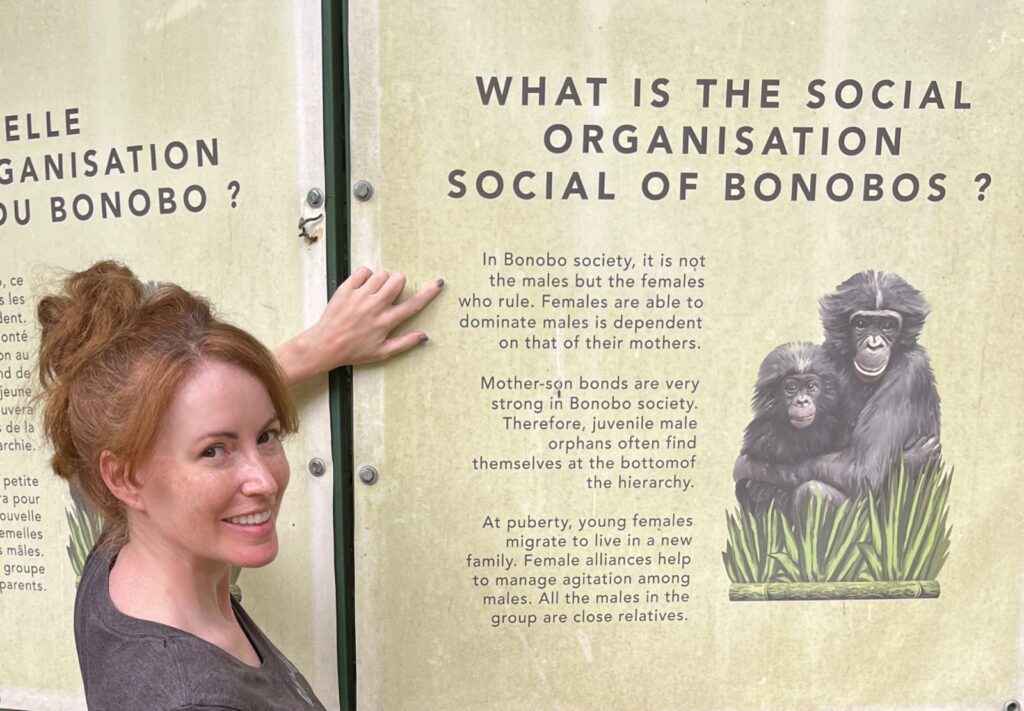
Another surprising fact: bonobos make love for “social” reasons, for pleasure. They are the only species — apart from humans — that do this 😲❤️.
We also saw two school groups walking around 👧🏾👦🏾. There were many children of various ages. I noticed their impeccable uniforms: white shirts and eggplant-colored skirts or pants. The girls had lots of clips and colorful plastic decorations 🎀, while the boys had their heads shaved. They walked two by two, holding hands — boys with boys, girls with girls 🤝.
When we passed between them, we greeted them with “bonjour” 👋 — and they responded with shy smiles 😊 and clear curiosity.
🐒 Baby Bonobos
First, we saw the babies. They were being cared for by “human mothers” — all women, because men scare them 🙅♂️.
I looked at the little bonobos’ hands 🖐️ — they looked so human! Just a bit longer, but very, very skilled and expressive ✨
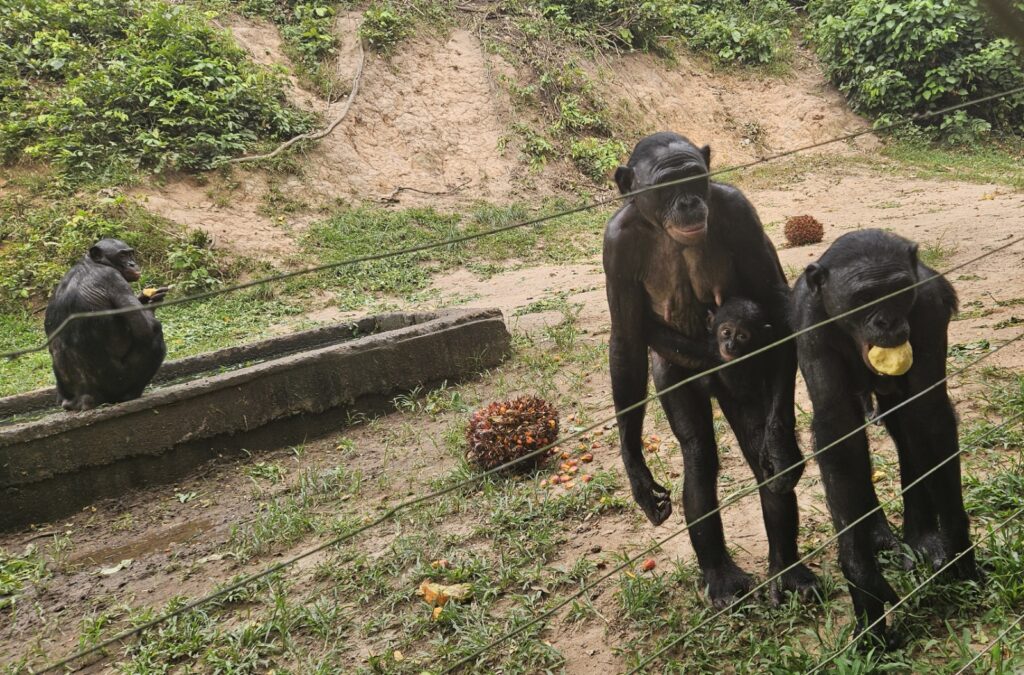
It’s amazing to see these creatures so close 🐒, watching them move with such agility. They play with their mothers, climb vines 🌿, and explore their world with curiosity.
Suzie told us they need affection ❤️. Bonobo babies live on breast milk and stay with their mothers until about 4 years old — without their mothers, they simply cannot survive 😢.
That’s why the orphans here are lovingly raised by human mothers — local women who stay with them all day, giving them the care and love they desperately need 🤱.
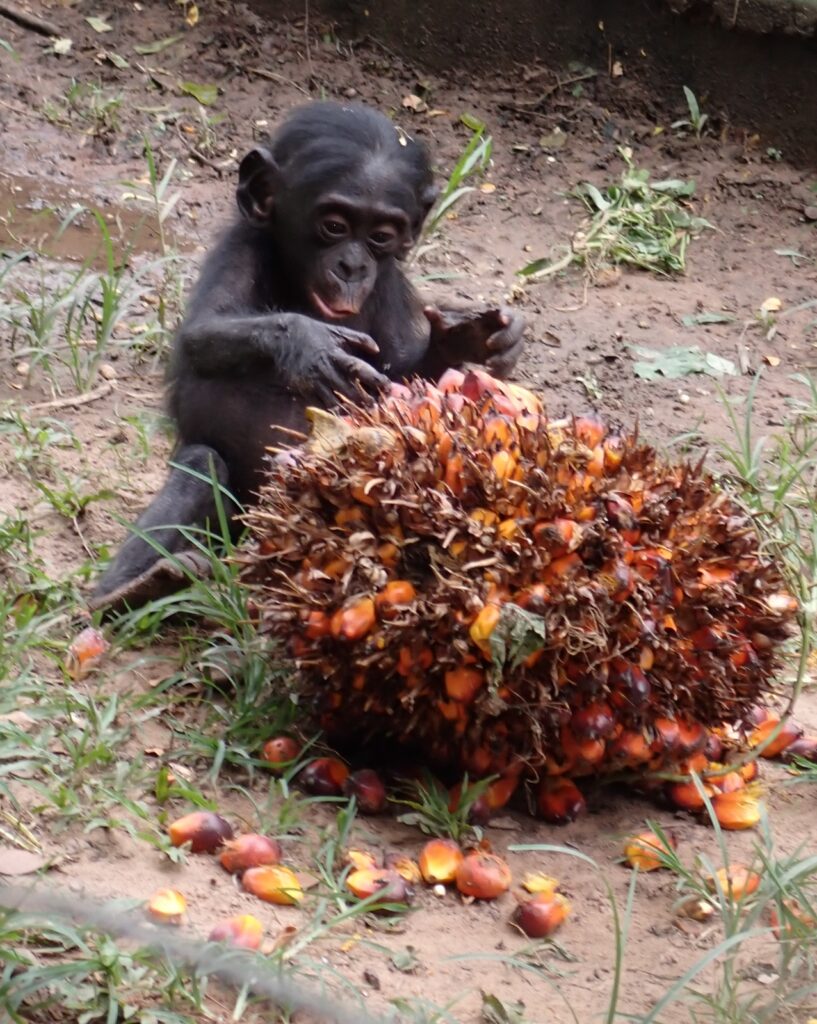
Suzie also told us that they only live in the DRC: in a well-defined equatorial area between the Congo River and the Kasai River. “The Congo river is the barrier with the Chimpanzees. They do not swim.”
The mighty adults! 💪
That bonobos are afraid of water, we did see when we went to see the first group of adults.
They were separated from the visitor area by a wide lake and an electrified fence. I freaked out when I saw the adults for the first time. They are very muscular!!
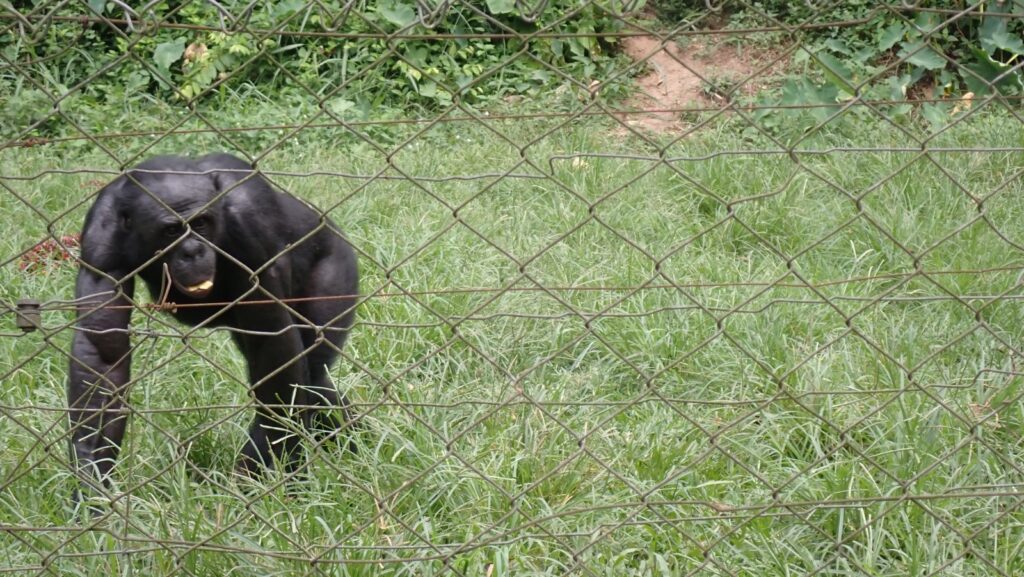
One’s arm, black and hairy, could be human. They are also surprisingly agile!
We finished our visit by having and excellent lunch on the premises, later to spend again 2 hours in the chaotic traffic of Kinshasa!

Health and Fitness Expo 🎽
The “Health and Fitness Expo” took place at the Decathlon in Kinshasa, at the intersection of the Gombe, Bandalungwa and Kintambo neighborhoods.
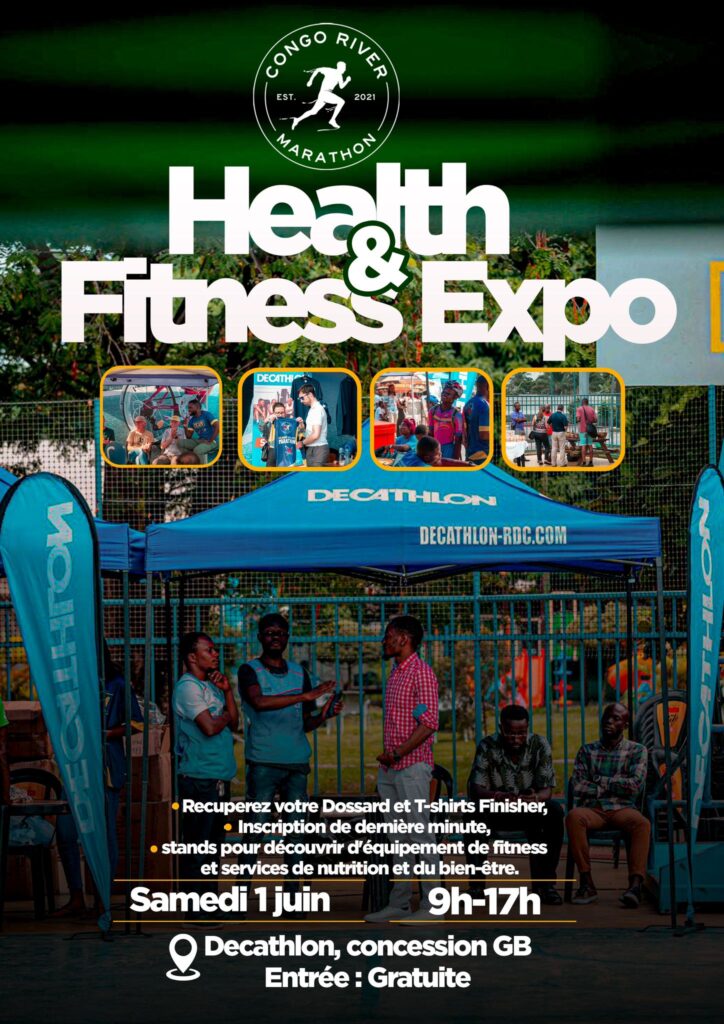
We ran there because it was less than 3 kilometers away, taking the opportunity to do a warm-up run, which I explain in this other post.

The Expo had some stands selling sporting goods 👟, but also promoting the country — like local coffee ☕ and aromatic soap 🧼.
At one booth, three girls and a boy were dancing 💃🕺 to the music, full of energy and good vibes 🎶.
Soon we picked up our BIBs 🎽 — they were customized: mine said “The Running Ginger”, and Roger’s read “The Running Roger”. 😄
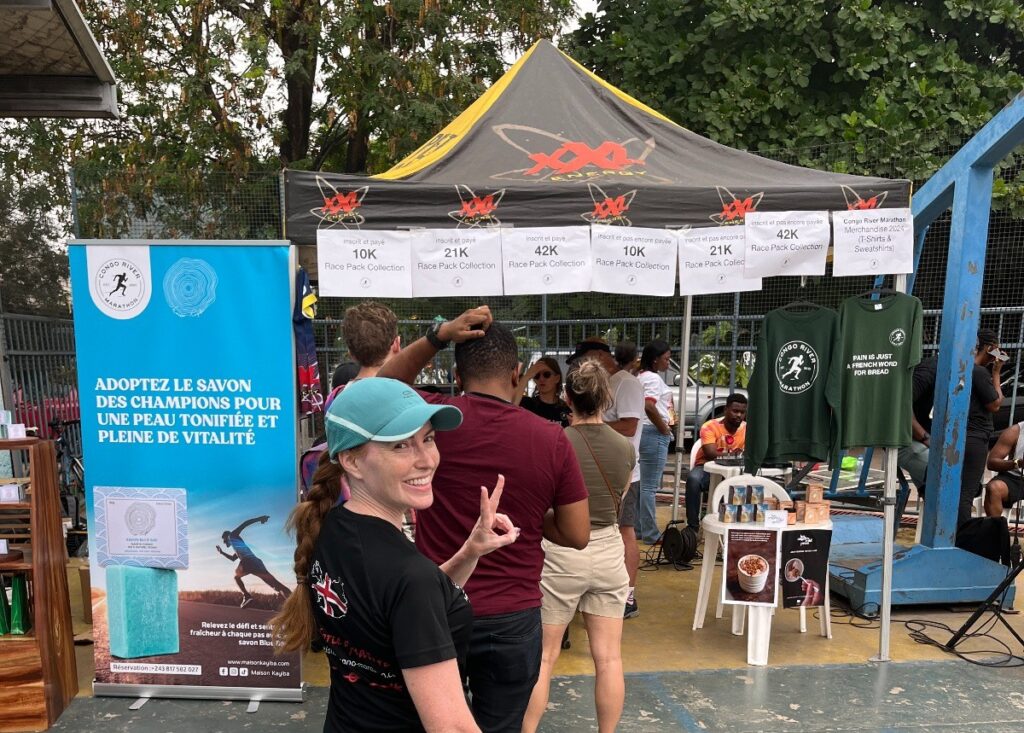
They gave us the official t-shirts 👕 — very colorful (very much Africa style 🌈) — with “Congo River Marathon finishers” printed on them. We decided to wear them for the race, even though we weren’t finishers yet 😊 (Spoiler: it didn’t bring us bad luck!)
On the back of the shirt it said “Toko Ningana”, which in Lingala, the local language, means something like “Let’s come together!” 🤝
The day after, many of us were still walking around proudly in those bright, colorful t-shirts 🏅.
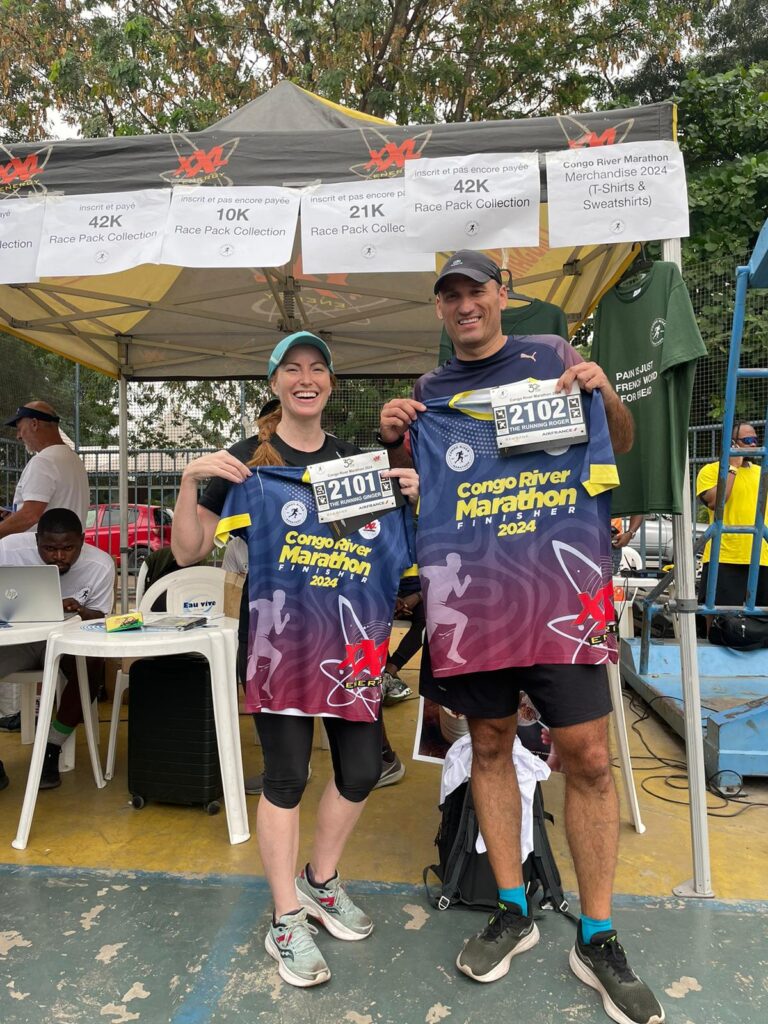
Additionally, they gave us an extra t-shirt from a “Shake out run” that took place the previous Saturday, which we couldn’t attend because we were sailing the Congo River in Maluku.
They also sold some very cool green pullovers and t-shirts with the slogan “Pain is the French Word for Bread” and the logo of the Congo River Marathon (“established 2021”).
We bought two t-shirts, and in the following days, while we were in Madagascar, they turned out to be very popular 😊
🏃♀️ The Race 🏃♂️
We arrived to the start on foot 🚶, because it was located on Colonel Tshatshi Avenue, just 3 minutes from our hotel 🏨.
It was 6:15 am and already quite a few people were gathered — many wearing the official t-shirt, the one with “Toko Ningana” printed on the back 👕.
There were also many soldiers present 👮♂️, as we had grown used to seeing — rifles, berets, and face masks. They looked intimidating at first 😬, but we welcomed their presence: they were there for our protection. ✅
There were quite a few foreigners too 🌍. In fact, the percentage felt surprisingly high compared to what we’d seen during our week in the DRC 🇨🇩.

We talked with some people in the organisation that we knew. Nancy from Motherland Escapes told us that many Congolese signed up at the last minute, especially for the 10k 🏃🏿♂️, and were picking up their BIBs right there.
Waiting at the start line 🎽
Music was playing 🎶 while it seemed that the start of the marathon (scheduled for 6:30 am) was delayed.
Rolly, the Marathon Organizer, was walking around with a microphone 🎤 and explained that “we’ll start in 2–3 minutes: we will play the national anthem and we’ll leave.”
And it happened like that — surprisingly! 😅
In a couple of minutes, the national anthem played 🇨🇩. The soldiers raised their hands to their temples in salute 🫡, and many runners put their hands to their chests.
Then those running the “marathon” were asked to line up at the start, and the small group that was going to run the full distance — with their purple BIBs — did so. Obviously, there was no formal control 😄.
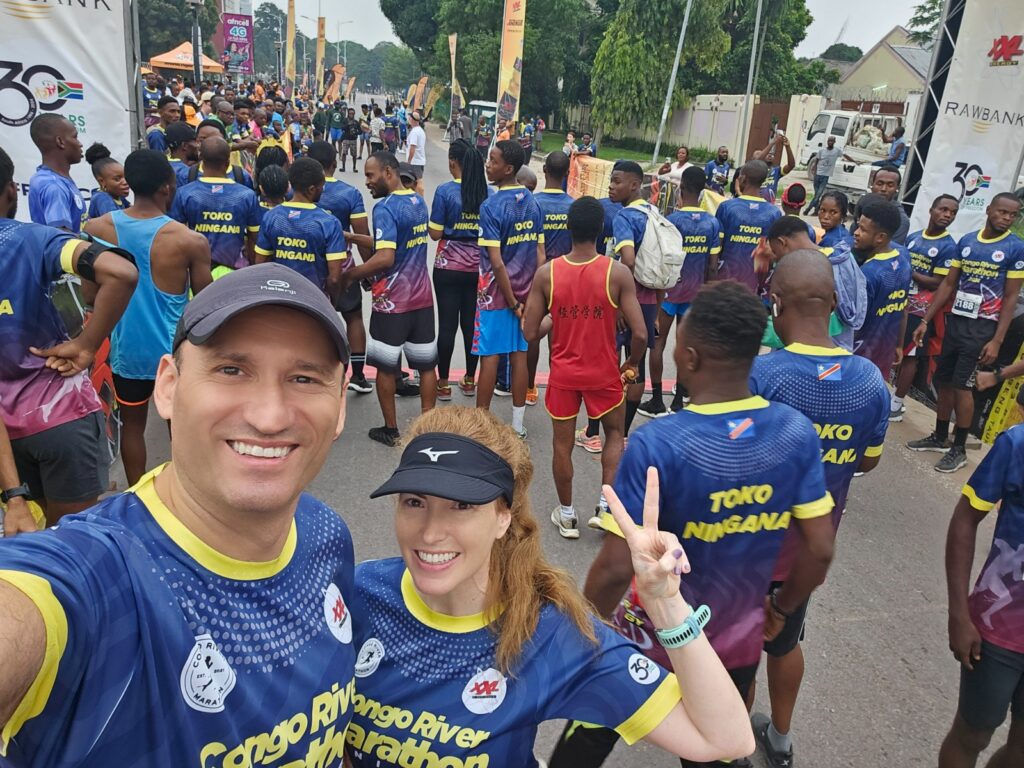
🏃♂️ Starting the Race: “Final countdown” and First Steps
A guy with a loudspeaker counted down: “trois, deux, un…” and just like that, about thirty runners took off.
It was past 7am, but luckily, in less than 5 minutes, we—the half marathon runners—were off too. Again, the “trois, deux…” countdown, and we left while some friends from yesterday’s dinner applauded us 👏.
🏞️ First 10k: Running Through Kinshasa’s Heart
From Colonel Tshatshi Avenue, we ran to Lemera Avenue in the opposite direction, then took United Nations Avenue, which featured a steep descent.
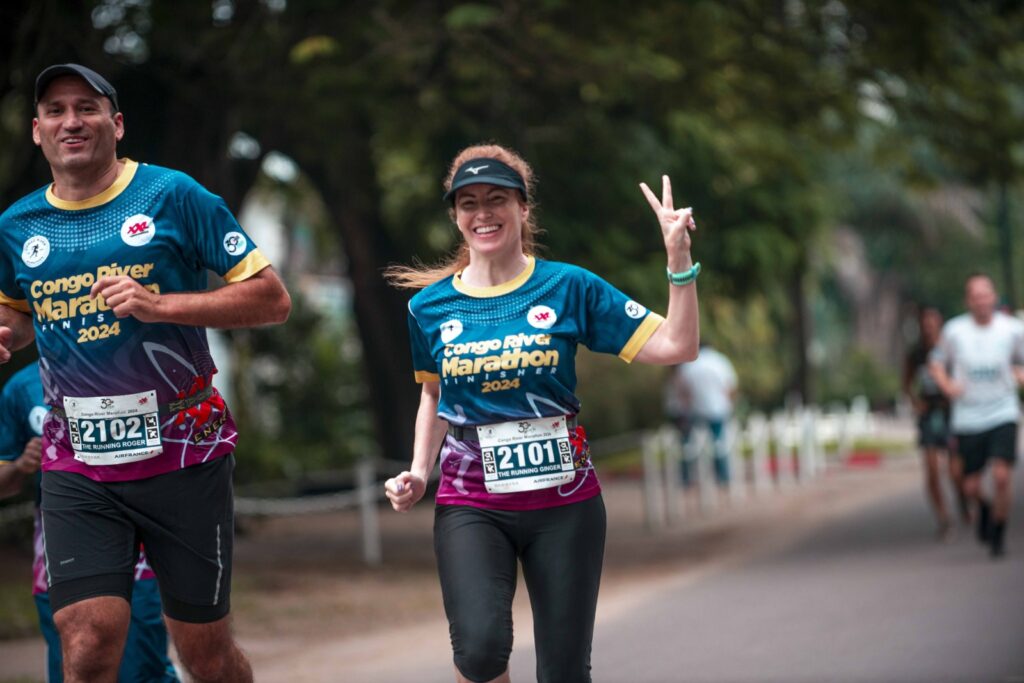
We saw the Congo River 🤩! Then, we passed the spot where we had run a few days earlier (read about Running in Kinshasa in our previous post). This time, the rusty barriers were raised, giving us better views.
🎉 First Lap Finish and Energy Boost
We finished the first lap crossing the start/finish line, where there was lots of excitement. The 10k runners were preparing to start soon.
Rolly, the organizer, spotted us and shouted “Vamos!” — like Rafa Nadal’s famous rally cry 🎾. That gave us the adrenaline boost needed for the second lap.
💦 Organization and Refreshments
There were multiple water and refreshment stations — a blessing given the heat.

Each lap had 3 water stations plus one with a fizzy energy drink 🥤. Impressively, all the cups were overflowing! 😊
Water was served by well-groomed ladies, balancing trays with plastic cups, looking like waitresses at a luxury event 👗.
It was an adrenaline boost that we would need for the second lap.
🔄 Second Lap and 10k Start
At kilometer 11 on Lemera Avenue, we heard the countdown again—this time it was just after 8am and the 10k race was starting.
I warned Roger, “They’re going to overtake us!” — and sure enough, fast young runners zipped past around kilometer 13 🚀.

The first girl to pass was small with braided hair, followed by another with a high afro bun. Sadly, later we saw the same girl lying on the ground at kilometer 6 (our 16), crying 😰.
The last two kilometers of the Congo River Marathon were, in a way, surreal. We were already tired — of course — but the energy of Kinshasa kept pulling us forward. After passing Place de l’Indépendance, with its wide open space and slightly faded grandeur, we turned onto Boulevard du 30 Juin, that long and chaotic artery that cuts through the city like a bold slash of concrete.
Up ahead, we saw the statue of Laurent-Désiré Kabila, proudly pointing toward the future. Or maybe to the finish line.
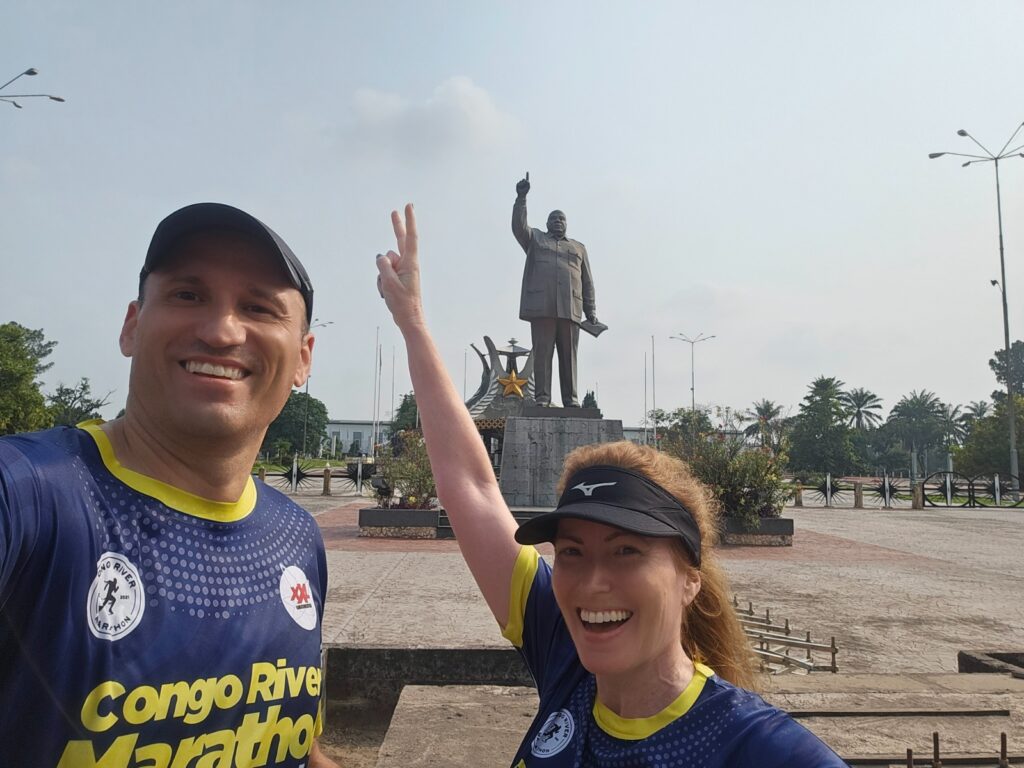
We passed him with a grin, taking a quick selfie as usual 📸. Around that point, despite our legs beginning to feel like jello, we somehow found a second wind.
🎉 The Finish: Holding Hands and Celebrating
The final meters brought us back into familiar territory — near where we had started that morning. The heat was rising, but so was the music — louder now — and the voices of the organizers and volunteers shouting out encouragement.

We looked at each other and nodded.
As always, we picked up the pace. We crossed the finish line holding hands high 🙌, sweaty, happy, and very much alive.
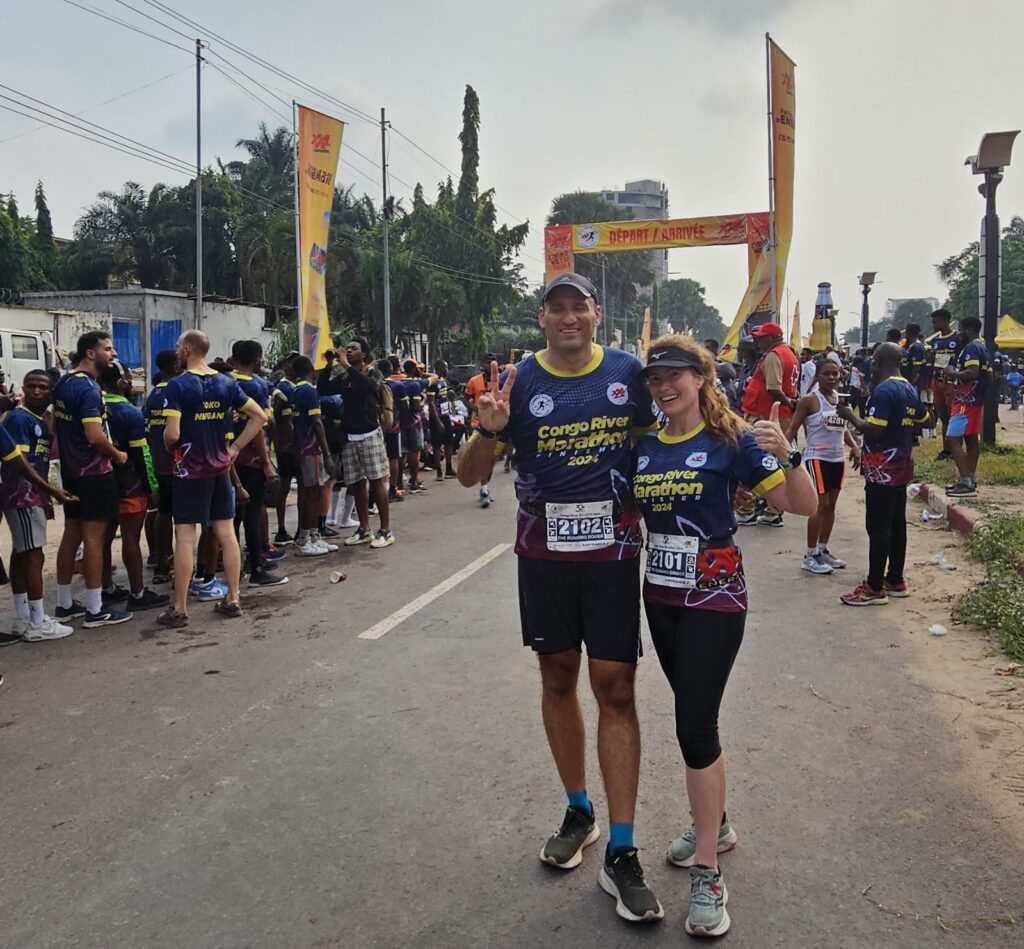
Later, chatting with friends from the previous night’s dinner, we learned the medals hadn’t arrived yet — stuck at the airport! Not surprising 😅. Nancy promised to send them home from Berlin 🇩🇪.
And…. we did receive them afterwards! Thanks so much Nancy! They are now proudly displayed in our “Hall of fame” at home!!
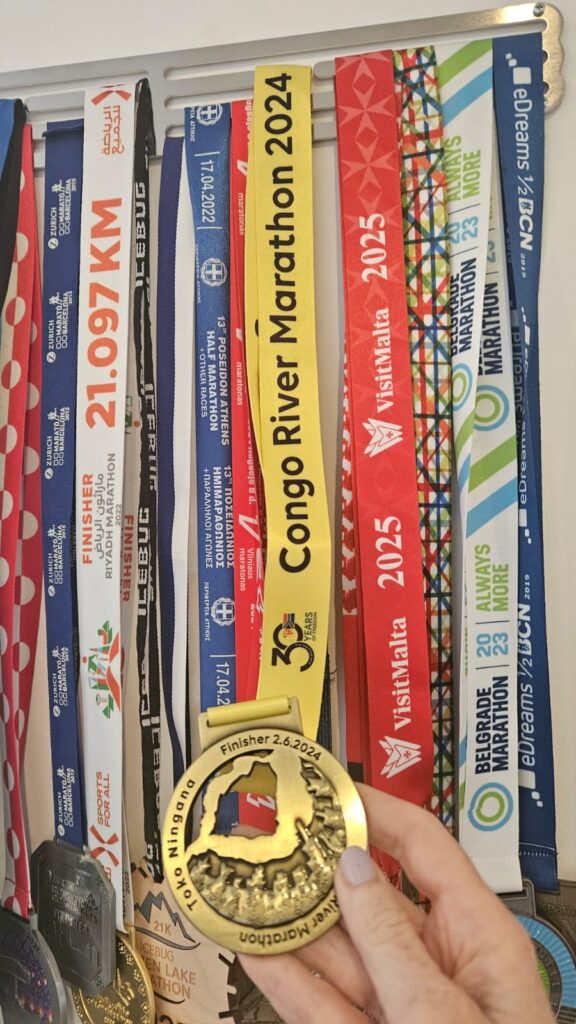
🍝 Pasta Night: Perfect Carboloading Before the Race
If you’re running the Congo River Marathon, you’re covered on carboloading!
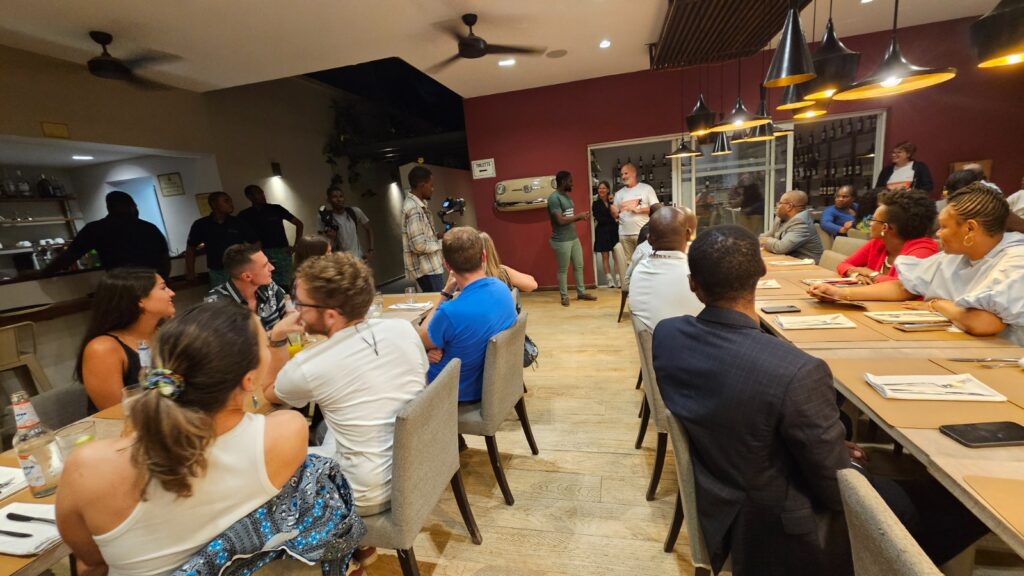
The day before the race, a “Pasta Night” 🍝 is organized with the Italian Embassy at one of Kinshasa’s best Italian restaurants — A Casa Mia.
The private event was limited to 70 guests and subsidized by the embassy — very fitting! 😊 Invitations showed the time as 6pm to 8:30pm, though most Congolese guests arrived fashionably late (typical!) ⏰.

The restaurant was a short walk from our hotel — close enough that we almost missed it! A security guard shouted, “A casa mia? Ici, ici!” 🗣️.
🍽️ Delicious Dinner and VIP Guests

The Italian ambassador and the DRC Sports Minister attended, with the minister even sitting at our table — a memorable honor!
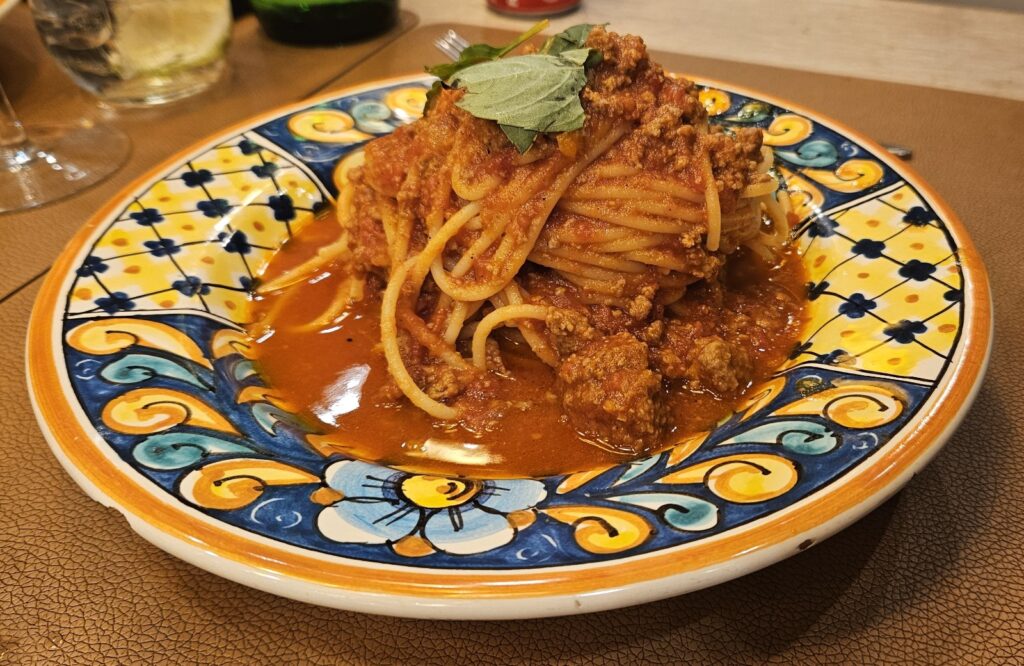
Dinner offered three pasta options; we chose Spaghetti alla Bolognese and Ravioli Carbonara, both delicious 😋.
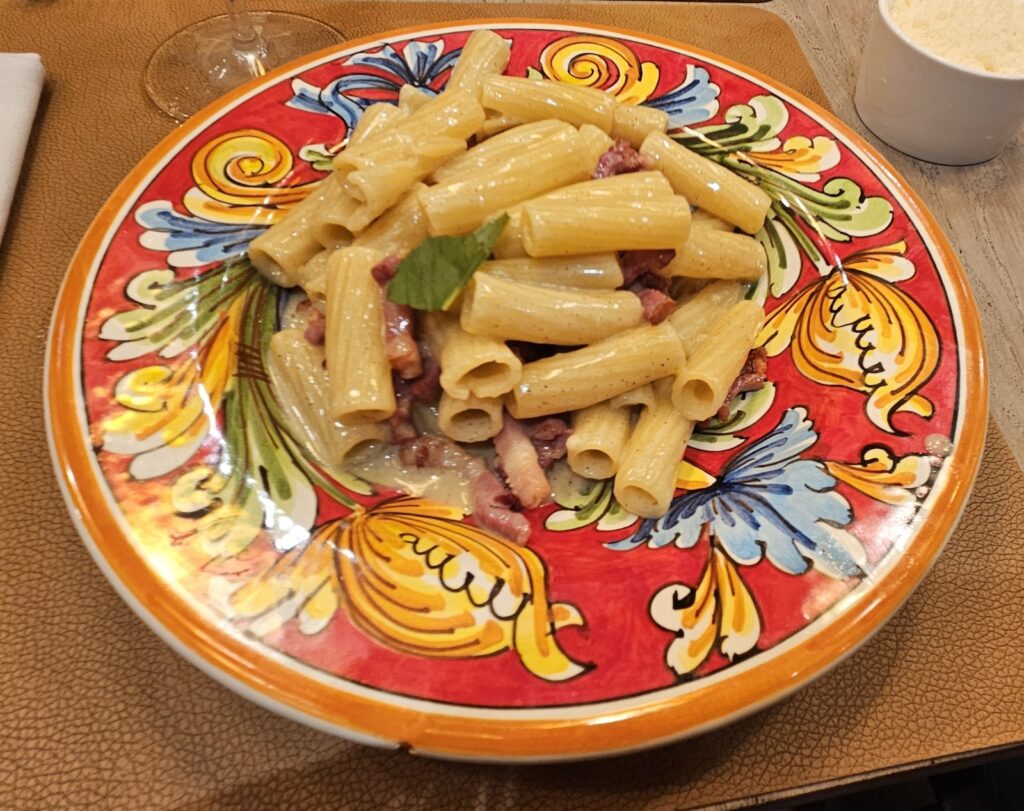
In short, a perfect evening and excellent carboloading — kudos to the organizers! 👏

Useful information
🏆 Congo River Marathon — Kinshasa, DRC
🌐 Website: congorivermarathon.com
🏃 Runners: Approximately 700 participants
🗓️ When: Early June annually. Next edition: June 7th 2026!!
📍 Location: Kinshasa, Democratic Republic of the Congo — Africa’s vibrant, chaotic capital city.
👟 This is an urban marathon — bring shoes suitable for pavement (though watch out for some potholes!)
✅ Experience a truly unique race in a city filled with energy and history.
✅ Join around 700 runners from around the world in this growing event and support local communities and help put the Congo on the global running map.
⚠️ Entry is not easy: You will need a visa well in advance. The marathon organization provides a Letter of Invitation (LoI) to help with your application, but expect processing to take weeks.
⚠️ Safety and culture: Kinshasa is about 1000 km away from the volatile eastern regions, but DRC remains a complex and sometimes unpredictable country. Travel with patience, respect, and curiosity — it’s a different world from Europe or North America.
❓ Frequently Asked Questions
Q: “Is the Congo River Marathon worth it?”
➡️ Absolutely—if you’re seeking a culturally rich marathon and are prepared for Kinshasa’s tropical climate and vibrant crowds! The 2025 edition welcomed over 900 runners from 30+ countries, with top-notch logistics and hydration support.
Q: “Is the safe to run the Congo River Marathon?”
➡️ Yes. The race itself, held in Kinshasa, is considered safe for international visitors. The event organizers work with local authorities to ensure road closures, crowd control, hydration stations, and emergency medical teams are in place. Security presence is visible throughout race day.
However, note this important travel advisory (2025):
The eastern regions of the Democratic Republic of Congo (particularly near Goma and the Ituri province) are currently unstable and not safe to visit due to armed conflict. Most Western governments advise against all travel to those areas.
If you’re planning your trip, stick to Kinshasa and avoid overland travel to other provinces.

Map
Running through the humid tropical climate of the heart of Kinshasa, the marathon route will take participants across some landmarks of the capital and the most beautiful scenery along the south bank of the second largest river in Africa
Congo River Marathon Website

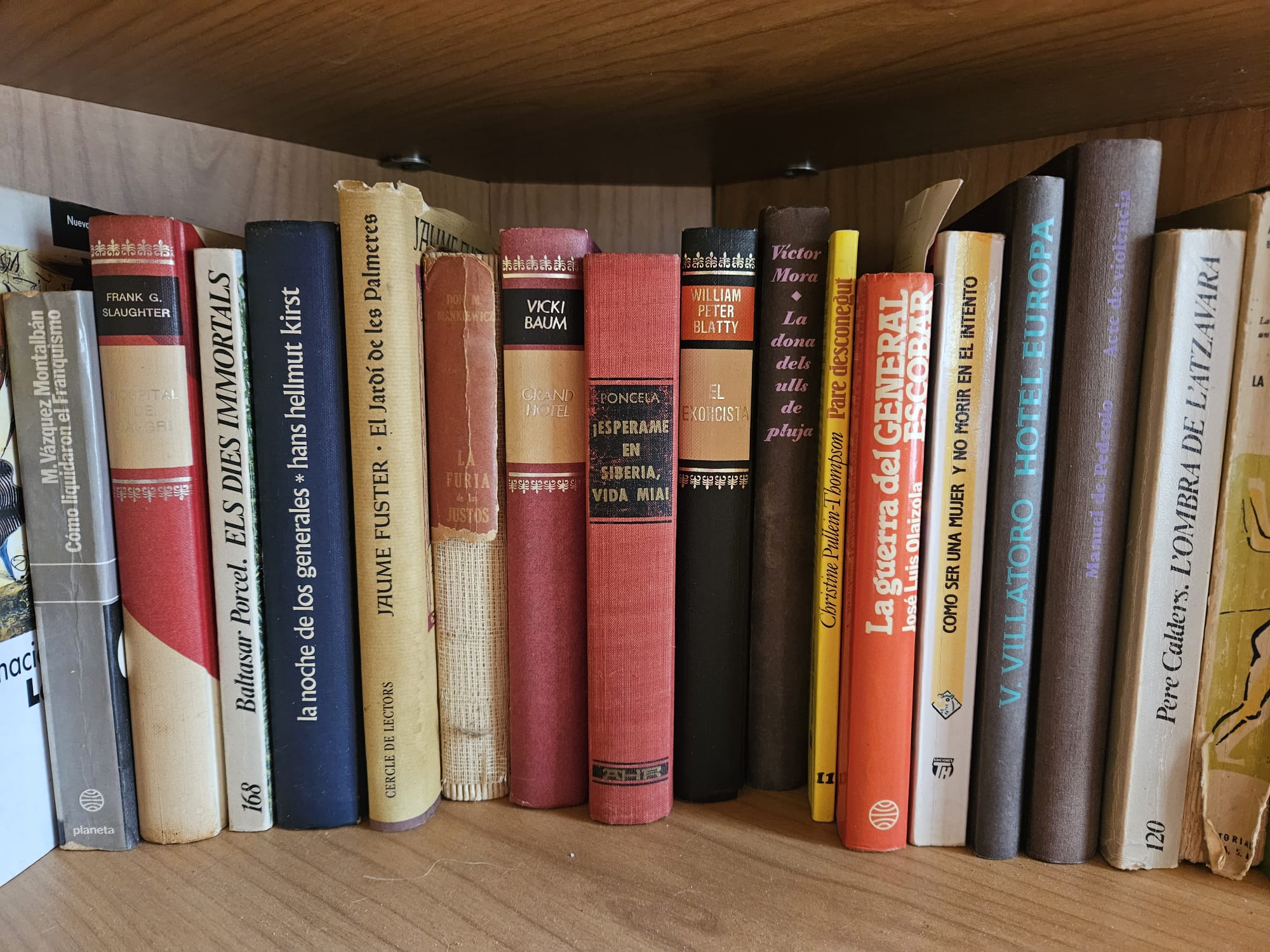
One book
Conrad himself wrote in the preface to the 1902 edition of his novel: “Heart of Darkness is experience carried a little (and only a little) beyond the actual facts, for the purpose, perfectly legitimate in my opinion, to bring it to the minds and hearts of readers.” Conrad saw something profound in the Congo and then wrote about it, what they call “the dark side”, a very rare aroma in literary works and that all readers admire without understanding it in its exact dimension.
“Vagabundo en Africa”, Javier Reverte.
“Heart of Darkness”, by Joseph Conrad.
Heart of Darkness is a novel by Joseph Conrad, first published in 1899.
The choice was obvious. I’ve read Heart of Darkness many times, and it still haunts me — it makes me think, it makes me dream… though not always beautifully 😔.
André Gide, during his trip to the Congo River in 1925, read the book for the fourth time and wrote:
André Gide, during his trip to the river in 1925, read Heart of Darkness for the fourth time, and wrote: “This admirable book remains profoundly true.
“Vagabundo en Africa”, by Javier Reverte.
It explores the horrors of Western colonialism, showing how it corrupts not only the lands and peoples it exploits but also those in the West who perpetuate it.
Although it received a lukewarm reception at first, Conrad’s semi-autobiographical tale has become one of the most widely studied works in English literature.
⚠️ Critics have sometimes condemned Heart of Darkness for its dehumanizing portrayal of colonized peoples and its dismissive treatment of women.
Yet, despite controversies, Heart of Darkness endures as a modernist masterpiece, deeply engaged with postcolonial realities and the complex legacy of empires.
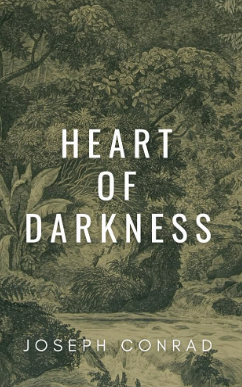
Plot : Heart of Darkness tells a story within a story. The novella begins with a group of passengers aboard a boat floating on the River Thames. One of them, Charlie Marlow, relates to his fellow seafarers an experience of his that took place on another river altogether—the Congo River in Africa. Marlow’s story begins in what he calls the “sepulchral city,” somewhere in Europe. There “the Company”—an unnamed organization running a colonial enterprise in the Belgian Congo —appoints him captain of a river steamer. He sets out for Africa optimistic of what he will find.
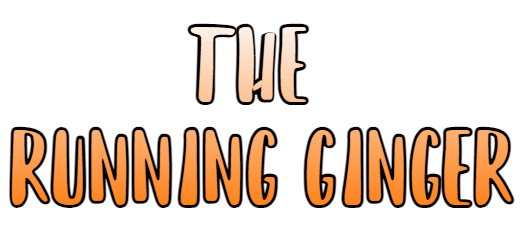
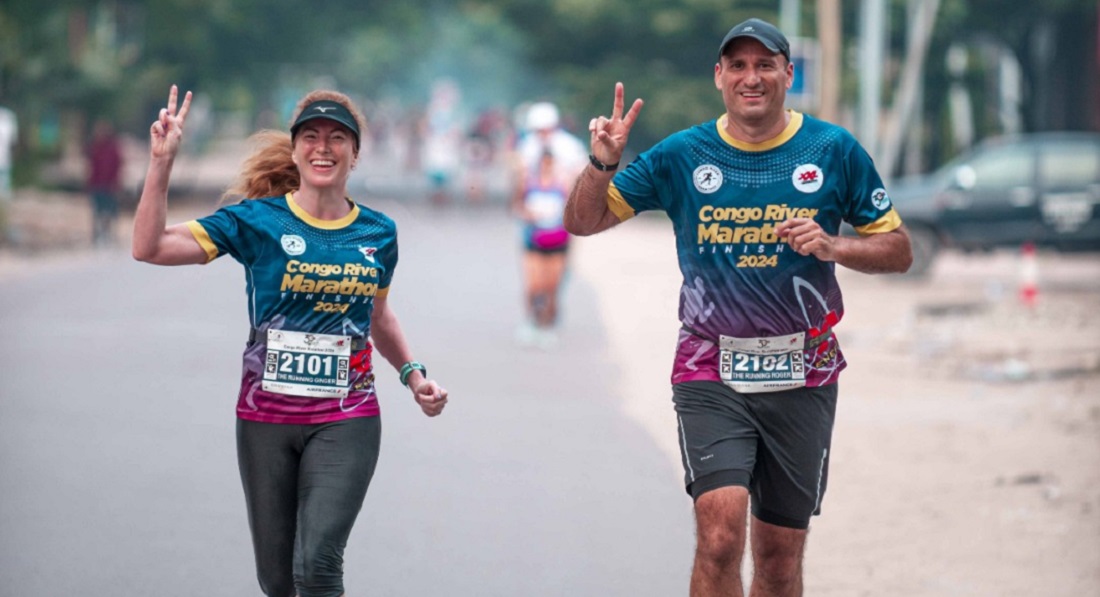
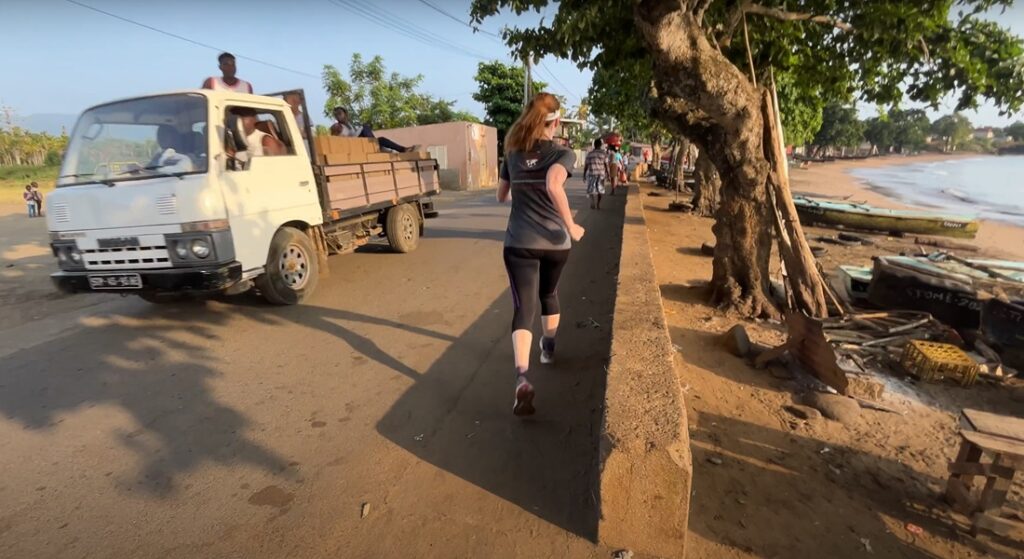
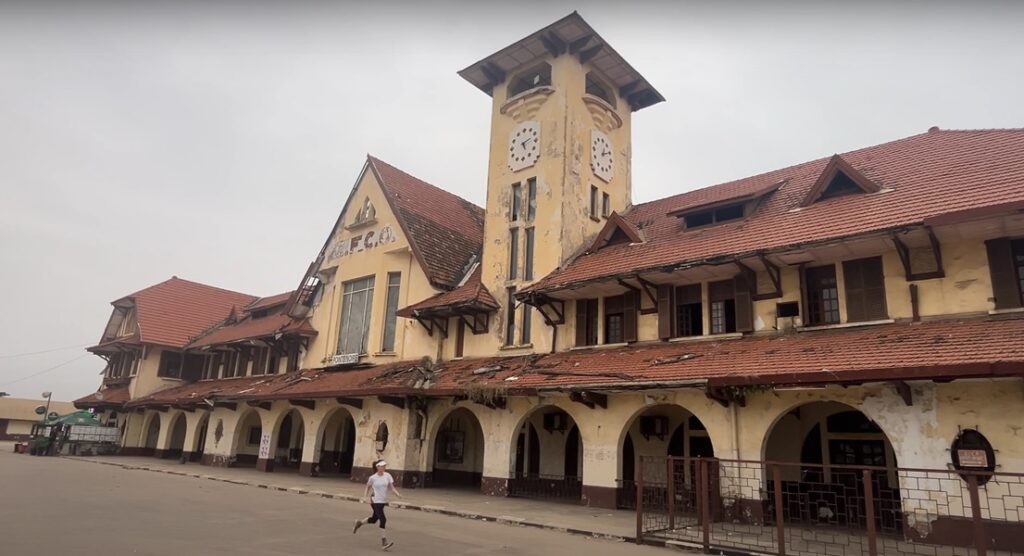
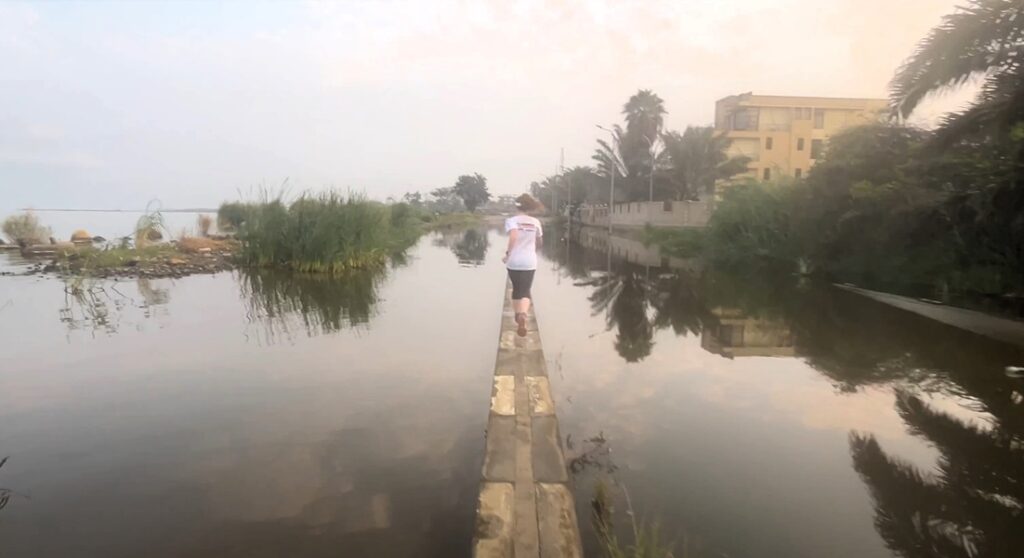
One Comment